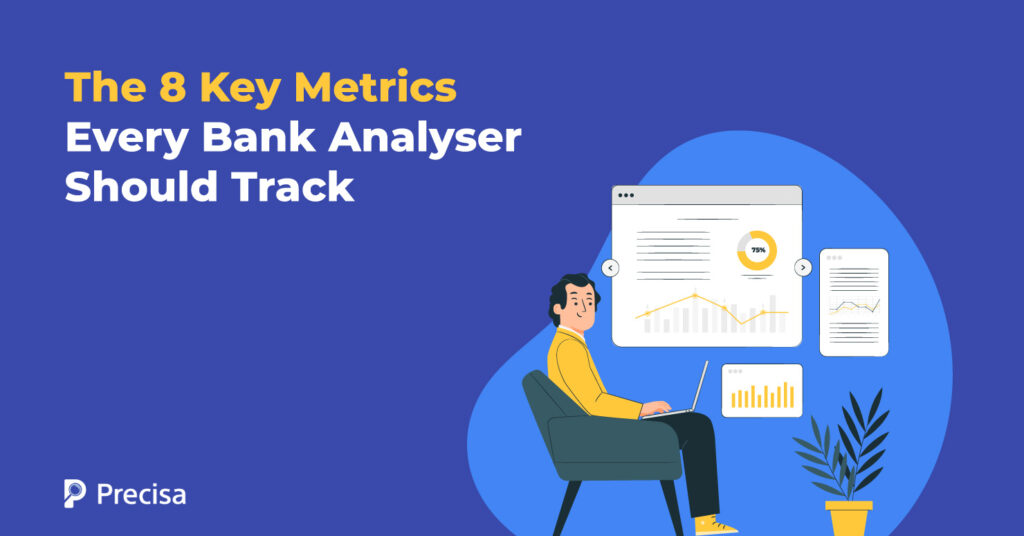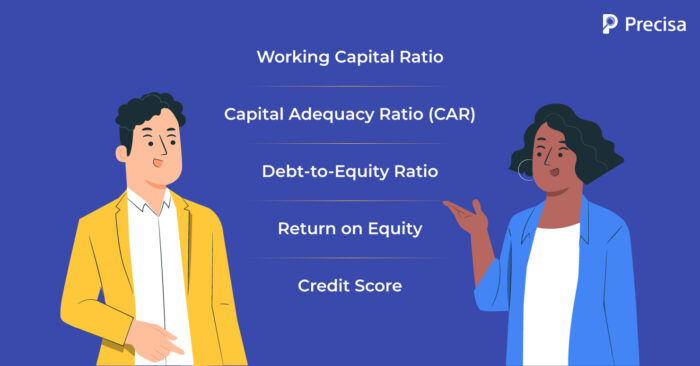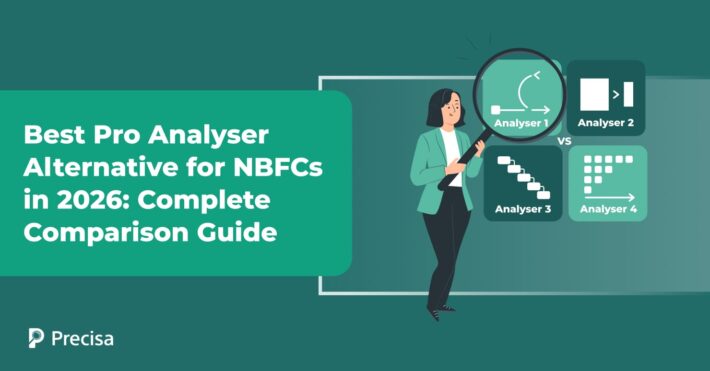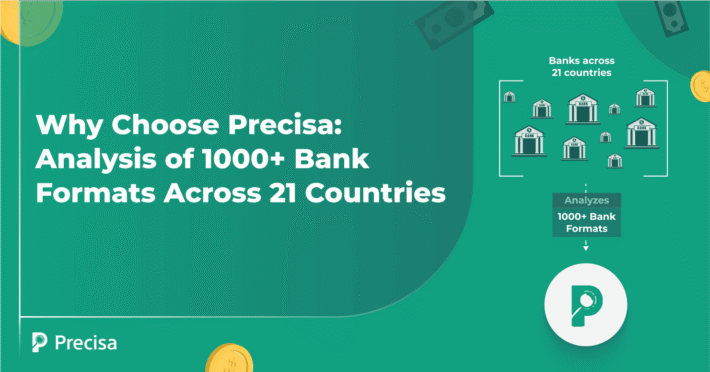The 8 Key Metrics Every Bank Analyser Should Track

A thorough analysis of a borrower’s financial data is one of the most important aspects of the underwriting process. Inaccurate analysis can open up lenders to risks. These include delayed payment of EMIs (Equated Monthly Installments), and non-repayment of loans.
Inaccurate analysis usually results from lenders leaving out certain metrics during the underwriting process. Failure to assess even one metric can result in poor decision-making. In turn, lenders may experience growth of non-performing assets (NPAs) and loan fraud.
This is where the adoption of superior bank analyser software can help lenders. This software can offer lenders a 360-degree view of a borrower’s financials, and they can make data-driven decisions.
What Is a Bank Analyser?
A bank analyser is an automated software solution that enables lenders to analyse a borrower’s financial data, efficiently. This is a cutting-edge solution powered by technology. These comprise cloud computing, Artificial Intelligence (AI), Machine Learning (ML), Optical Character Recognition (OCR), and robotic automation.
The software automates the entire process of analysing documents such as balance sheets, cash flows, and income statements. Superior software is programmed to analyse all key metrics associated with a borrower’s financial health.
Lenders also get access to a creditworthiness score that can inform their decisions. Additionally, they can generate detailed reports for any aspect of a borrower’s financials.
8 Key Metrics Tracked by a Bank Analyser

Here’s a snapshot of key metrics tracked by a superior bank analyser to help lenders make data-driven decisions:
1. Working Capital Ratio
Working capital refers to the difference between a company’s assets and liabilities. This financial metric enables companies to plan for future events and have access to cash to meet their short-term obligations.
Also known as the current ratio, the working capital ratio, enables lenders to gauge whether borrowers can honour their EMI repayments. A larger working capital ratio is considered to be a positive sign of a company’s financial Wellness.
Working Capital Ratio = Current Assets / Current Liabilities
2. Capital Adequacy Ratio (CAR)
This metric helps lenders gauge a borrower’s capability to absorb unexpected losses. These losses may be caused by a market downtown, the loss of a client, or any other circumstance.
Essentially, borrowers with a higher CAR can continue to thrive in the face of such losses. In turn, they are more likely to be in a position to repay the loan even during such loss periods.
Capital Adequacy Ratio = Tier 1 Capital + Tier 2 Capital / Risk Weighted Assets
(Risk-weighted assets refer to liabilities such as loans)
3. Debt-to-Equity Ratio
Lenders must accurately gauge the extent to which a company has already taken debt to fund its activities. The debt-to-equity ratio is an important metric that indicates a company’s financial structure, and its dependency on debt.
Debt-to-Equity Ratio = Total Liabilities/ Shareholders’ Equity
A higher debt-to-equity ratio can indicate that the company is less likely to honour its payments on time, and in full.
4. Return on Equity
This metric helps lenders gauge a business’s profitability by looking at the profits generated for shareholders.
Return on Equity = Net Income / Shareholders’ Equity.
A higher return on equity Indicates a business’s ability to generate revenues and in turn, profits. Profitable companies are more likely to repay their debt in full.
5. Credit Score
This important financial metric is a prediction made by an accredited credit bureau based on a borrower’s past behaviour with credit products. These may include credit cards, home loans, and auto loans to name a few.
This score is allocated based on past credit behaviour. A higher credit score indicates that a borrower is a responsible credit customer, and has paid off loans in the past. Hence, they are more likely to pay back a loan on time and in full.
6. Net Profit Margin
The profitability of a business plays an important role in helping lenders gauge whether a loan applicant can be a prospective borrower. A company’s net profit margin is a holistic measure of business profitability.
Net profit margin is calculated by subtracting the cost of raw materials, taxes, and other expenses, from revenues.
Net Profit Margin = (Net Profit / Revenue) x 100
Businesses with a higher net profit margin are healthier, financially, and have a strong cash flow. They would rank higher on the scale of potential borrowers.
7. Current Liability Coverage Ratio
Businesses with a higher liquidity make better borrowers. The current liability coverage ratio indicates the liquidity of a business. It speaks to the ability of a business to pay off short-term obligations such as loans.
Current liability coverage ratio = (Net cash from operating activities – cash flows)/Average Current Liabilities
A current liability coverage ratio of one means that the company has a good amount of liquidity and can be a good candidate for a loan. A ratio of less than one does not bode well for potential borrowers.
8. Cash Flow to Net Income
A healthy cash flow indicates that there is an equal or higher amount of inflow of funds as opposed to outflows.
Cash flow to net income = Cash Flow from Operating Activities / Net Income
This ratio can help lenders gauge the state of a business’s revenues, its ability to meet long-term obligations, and its ability to meet EMI payments.
Impact Driven by a Bank Analyser
By adopting the use of a bank analyser lenders can automate the tracking of these eight metrics. They can drive the following outcomes:
- Achieve operational efficiency by avoiding errors and omissions of key metrics.
- Accurately assess borrower’s risk profile, and make data-driven decisions.
- Provide customised, cost-effective solutions to borrowers based on their unique needs. and
- Flag cases of potential fraud early on, and avoid the financial and reputational consequences.
- Strengthen risk assessment capabilities and reduce the growth of NPAs.
- Reduce the turnaround time on loan approvals, and drive conversions and revenues.
- Cut costs by running lending operations with lean teams, with a focus on optimising profitability.
The Takeaway
Thorough bank statement analysis with all key metrics enables lenders to accurately assess a borrower’s risk profile. The use of bank analyser software automates the process.
Most importantly, this solution delivers a creditworthiness score, which further helps lenders make accurate decisions. Clearly, such a tool helps lenders gear up to scale quickly, while effectively helping them manage risk.
Presica’s comprehensive and seamless financial data analysis solution simplifies and speeds up the process through automation. The software provides actionable insights on a customisable dashboard, thus helping companies make informed business decisions.
Request a free demo today!



